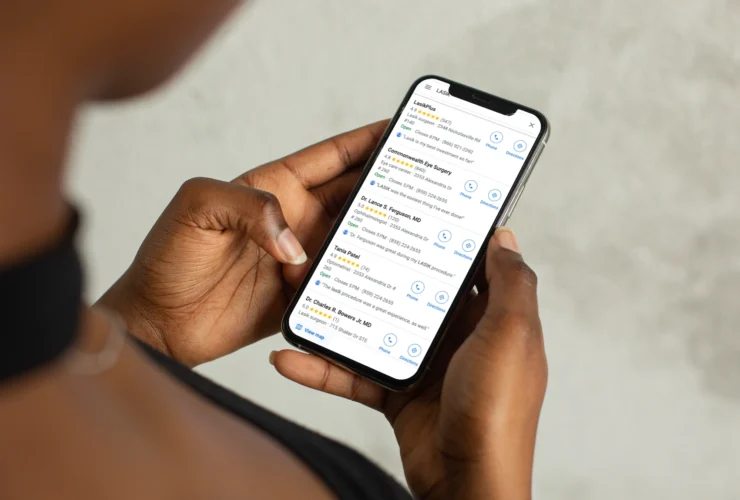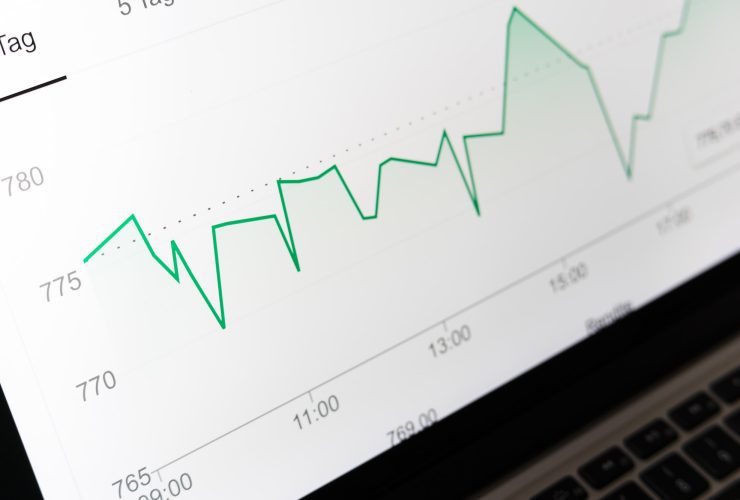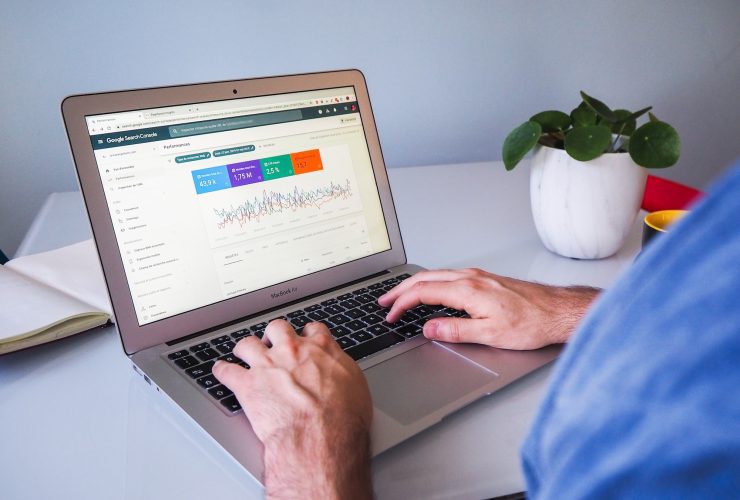How the Google Search Algorithm Works
We all know that Google is the most important tool for finding information on the internet. It’s used by billions of people around the world to discover, connect, and learn each and every day.
But most people don’t think about how Google actually works. That’s what we’ll explore this week on the Medical Marketing Podcast.
Welcome
Hello everybody, and welcome to the Medical Marketing Podcast from Messenger – the show where we give you actionable tips and insights to help improve your practice marketing, grow revenue, and take patient experience to the next level.
This week, we’re talking about the Google Search Algorithm, one of the most tremendously complex – and perhaps most valuable – inventions of the last 50 years. Let’s dive in.
Step 1: Crawling
The first thing you need to know about how Google Search works is a process called “crawling.”
This process happens when Google’s computers (called “spiders”) go around the web following links. The main spider Google uses is called Googlebot.
Googlebot views (and stores) all of the content it encounters – a process called indexing – so that Google Search can serve the most useful results to people when they’re searching.
This is why it’s important to make sure that your website is always accessible to Google’s spiders. If there are any errors that prevent Googlebot from crawling your website, it can’t store your website in its index. This means that when patients are searching for your services, they won’t be able to find you.
The most important part of crawling is the links on a page because links are a vital piece of Google’s algorithm.
Googlebot follows all of the links on a page to discover new content that’s been added to the Internet.
Links also help with ranking. In general, the more websites around the Internet that link to you, the more popular Google is going to think your website is…and the higher you’ll rank for it.
But I’m getting ahead of myself.
The first step is crawling. The second step, which we’ll discuss next, is indexing.
Step 2: Indexing
The second step in the Google algorithm is indexing. When Googlebot crawls a web page, it stores all of the words on that page into its memory. This is called indexing.
The Google Search index contains hundreds of billions of web pages and is well over 100 million gigabytes in size. It’s like the index in the back of a book – it has an entry for every word Google finds on every webpage they index. When Google indexes a webpage, they add it to the entries for all of the words it contains.
Google crawls all of the websites on the Internet on a regular basis to see if anything has changed since it last visited. If old content has changed or new content has been added, Google will update its index accordingly. This ensures that Google is continually surfacing the most relevant content to people who are searching.
If you had been preventing Googlebot from crawling your site, you wouldn’t be added to the index. But assuming you caught this error and corrected it, Googlebot will come back around eventually, crawl your site, and index its content to be served to future searchers.
Now that crawling and indexing are complete, we get to where the magic happens: the search.
Step 3: The Search Results
Chances are by the time you’re listening to this, you’ve already Googled something today. Maybe you’ve Googled several things. Searching on Google is one of the most commonly performed tasks on the Internet, so we tend not to think much about it. But what’s going on behind the scenes is amazing.
Every minute, Google handles approximately 3.8 million searches. That’s 3.5 billion individual queries per day – more than 100 billion searches each month.
In a fraction of the time it takes to blink your eye, Google can answer your question, give you directions to a business, help you look up vital information, and more.
When you type something into Google Search, Google first needs to understand what you’re trying to accomplish – the intent of your query.
Are you looking for directions to a business? Are you trying to answer a common question? Or are you just looking up basic information?
This is a tremendously difficult task. Google says that 15% of all queries on a daily basis are searches they’ve never seen before, so their systems have to get really good at understanding intent.
Once Google has determined what your intent is for a query, it’s now time to display results and rank them appropriately. Google looks through its index to find pages that fit the intent of your query and serves them up to you on a silver platter of a page, called the Search Engine Results Page, or SERP for short.
And this brings us to the Holy Grail of Search Engine Results: ranking.
How Results are Ranked
So now that Google has a list of contextually relevant content it wants to show you, it has to determine which ones to show you first.
Remember when I said that links are important? This is where that comes into play. In general, the more links your site has attracted, the better chance you have of ranking higher in the SERPs.
It used to be that links were all that was needed to rank well. But as Google’s algorithms have evolved over the years, the complexity of ranking well has, too.
Don’t get me wrong – links are still important. But there are now a variety of other factors that Google takes into account.
One common myth about Search Engine Optimization (SEO) is that there is one definitive “Google Algorithm” that ranks content. This isn’t true.
Google’s “algorithm” is actually made up of hundreds – perhaps thousands – of very small algorithms that work together to rank content. Google evaluates thousands of different factors to determine rankings, such as the speed of your website, the freshness and usefulness of your content, the mobile usability of your site, and more.
Google also takes into account the intent of the query to change how it ranks content. If you’re looking for information about a particular business – their hours of operation, for instance – it may direct you to a featured snipped or Google My Business card with that information. But if you’re doing a more general search – say, “plumbers near me”, Google will likely display the Map Pack with 3-4 results based on their relevance, physical proximity to you, average customer star ratings, and more.
By now, some of you are probably thinking that there’s one big thing I missed – and you’d be right.
What is it? That’s right: ads.
How Ads Factor into Search Results
Let’s talk about how ads factor into Google results.
Ads on Google often appear above organic results. Some people find them annoying and will go out of their way not to click on them, while others click the first thing they see.
Ads on Google are basically people and businesses wanting a “shortcut” to the top. They’re essentially buying that #1 spot. They’re making a bet that if they show up first for a given keyword search, that they’ll get more clicks, more traffic, and more business.
And they’d be right. Ads on Google work incredibly well – they accounted for $186 billion of Google’s revenue in 2020. But we won’t get into that today.
Perhaps the most important thing you should know is that Ads and Search are two fundamentally different products from Google, and they do not – let me repeat, do not – have a direct impact on each other.
You might have heard that spending money on Google Ads will help you rank better organically. This is not true. The teams that work on these products are “firewalled” within Google, so there’s no cross-contamination.
If you want to pay for advertising and buy that #1 spot, go for it. You’ll probably do very well. If you want to focus on organic SEO alone, more power to you.
Just don’t get confused and think that one has a direct impact on the other because they don’t.
—
So that’s a little bit about how Google Search works. So next time you find yourself typing something into that little search box, you can think about all the work that goes on behind the scenes to deliver you all that great content and knowledge in the blink of an eye. Now you know.
Next Week
Well, that’s all for this week’s episode of the Medical Marketing Podcast – thanks for tuning in.
You can subscribe to The Medical Marketing Podcast for free on Apple Podcasts, Spotify, or wherever you get your podcasts. And if you like the show, let us know by writing a review on Apple Podcasts – we’ll have a link in the show notes.
If you want more practice marketing resources, check out our website at www.messenger.md. We’re always sharing helpful tips and know-how to help you improve your practice marketing, grow revenue, and take your patient experience to the next level.
That’s all for today’s episode – I’m Crawford Ifland. See you next time.







